Marketing funnels are an illustration of the sequence of steps taken by your potential client. It shows the journey from your potential client ‘discovering’ your law firm to them signing a retainer (and ultimately referring similar clients). The fundamental objective of your law firm marketing funnel can be driving sales, generating warm leads, or building brand awareness. In this article, you will learn what marketing funnels are and when you should build one for your law firm.
Understanding Marketing Funnels
A marketing funnel is visual portrayal of the (usual) steps a person goes through on the journey from being a cold viewer to a paying client.
People consider many factors before making a purchase – particularly a purchase that is expensive or new.
- How can the product solve their pain points?
- Is the product going to work for them?
- Can they trust the product?
- Is the value greater than the price?
Marketers realised they could improve the effectiveness of their campaigns by getting those questions answered and building relationships with their potential customers.
Traditionally, marketing funnels are based on behavioural psychology principles appealing to thinking, feeling, and acting.
The Psychology Behind a Marketing Funnel
Top of the Funnel (Thinking): Recognition of a pain point or need.
Middle of the Funnel (Feeling): Searching for a particular solution. Qualifying your company and product.
Bottom of the Funnel (Acting): Making a purchasing decision. Pulling the trigger.
How The Marketing Funnel Works in Practice
Before delving into the complexities of attracting legal clients, let us first take a look at a more simple transaction.
Consider this real-world example of a marketing “funnel”: a grocery store attendant handing out food samples at a grocery store.
Awareness: Store visitors are alerted to the existence of a brand/product when a team member of the grocery store offers a free sample.
Interest: Some visitors will decline and move on. Others will partake of the sample, tasting food from brands that they may not otherwise consider.
Desire: A portion of the visitors who trialled the product will be grateful for the taster, but won’t consider purchasing. Others will consider purchasing the product, but will first compare and contrast similar products to be certain they’re making a good choice.
At this point, the potential buyer has received something of value from the free taste and developed an informed opinion about the quality and trustworthiness of the product.
Action: A portion of these visitors will then buy the product they trialled for free.
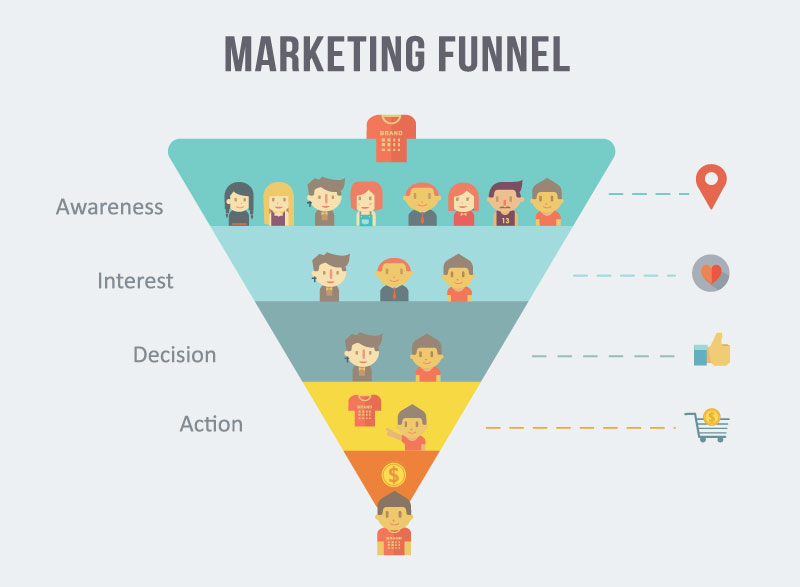
Understanding the Marketing Funnel
As you can see, the law firm marketing funnel reference comes from its shape. Potential clients are expected to drop off as they move through each step of the customer journey. The drop off is natural. People that go through the funnel are disqualified due to various circumstances: they are no longer interested, they found an alternative provider, or they decided they can’t afford legal services right now. Surprisingly, marketers see this drop off as a good thing: since you don’t have to waste resources investing in leads that are unlikely to convert into paying customers.
Marketing funnels are relied on so heavily in marketing because they deliver results with predictability. When a funnel is well built, all you need to do is bring your target audience and wait for results to trickle in.
If you’re curious about the best time to build a marketing funnel for your law, it’s as soon as you start creating content. If you are already publishing content and you haven’t considered the marketing funnel, it’s worthwhile going back and tailoring the content for the appropriate stage of the buyer’s journey.
Creating Law Firm Marketing Funnels: Type of Content for Each Stage of the Funnel
Building on your understanding of how the marketing funnel works, let’s dive into what content is appropriate for each stage of your law firm marketing funnel. It is worth noting that there is some cross-over between the content that’s appropriate at each stage. In fact, some marketing collateral will guide potential clients through multiple stages of the funnel. What matters is that you (or your copywriter) position the content for readers at the appropriate stage of the buyer’s journey through the marketing funnel.
Content for Potential Clients at the Top of Your Law Firm Marketing Funnel
In the early stages of the buyer’s journey, it’s crucial to remember that your potential clients are looking for information – not your elevator pitch. They have recognised a particular need, and they are surveying the landscape for potential solutions. You want to position your law firm as a trusted resource. Here are the types of content you can use for the top of your law firm marketing funnel:
- Social Media Posts.
- Social Media Ads.
- Infographic.
- Blog Posts (for high-search volume keywords and ‘what is’ style content).
- Podcasts.
- EBooks.
- Quizes or Surveys.
- Short Videos.
- Web Pages.
- Checklists.
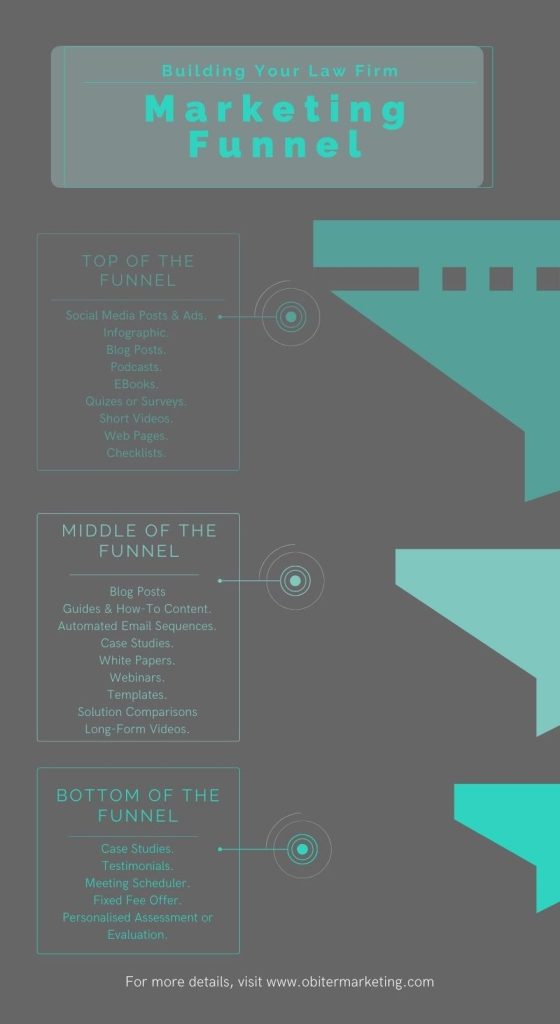
Content for Potential Clients at the Middle of the Funnel
At this stage of the buyer’s journey, your potential clients have discovered your law firm and they’re searching for information about why they should choose your law firm over the others. They are very likely to be comparing your law firm to others.
- Blog Posts (that answer specific questions).
- Gated ‘Comprehensive’ Guides or How-To Content.
- Ungated Guides and How-To Content.
- Automated Email Sequences.
- Case Studies.
- White Papers.
- Webinars.
- Templates.
- Solution Comparisons (ie. pros and cons of DIY divorce kits).
- Long-Form Videos.
Content Appropriate for the Bottom of the Marketing Funnel
There’s a very real chance that the potential clients who travel this far along the buyer’s journey will become paying clients. These individuals have done their research, but they want further assurances before signing on as a client. Here are several types of content you can use to nurture these clients:
- Case Studies.
- Testimonials.
- Free 30-Minute Meeting and/or Meeting Scheduler.
- Discounted Fixed Fee Offer.
- Personalised Free Assessment or Evaluation.
Nurturing Clients After Their Matter Concludes
Retaining existing (satisfied) clients is much easier and much cheaper than attracting new clients. What this means for law firms with clients who are likely to need continuing advice, it’s worthwhile creating content that nurtures existing clients. Informative email newsletters, a social media presence, video content, informal ‘check ins’, and educational blog posts are helpful at this stage. The idea is to ensure your firm is top of mind if the existing client needs further assistance, or wants to provide a referral.
Need Help Building Your Law Firm Marketing Funnel?
Obiter Marketing builds digital marketing content engines that deliver what your potential clients need when they need it. We’ll partner with you to address their pain points, assuage their concerns, and guide them through the buyer’s journey before ultimately selecting your law firm.

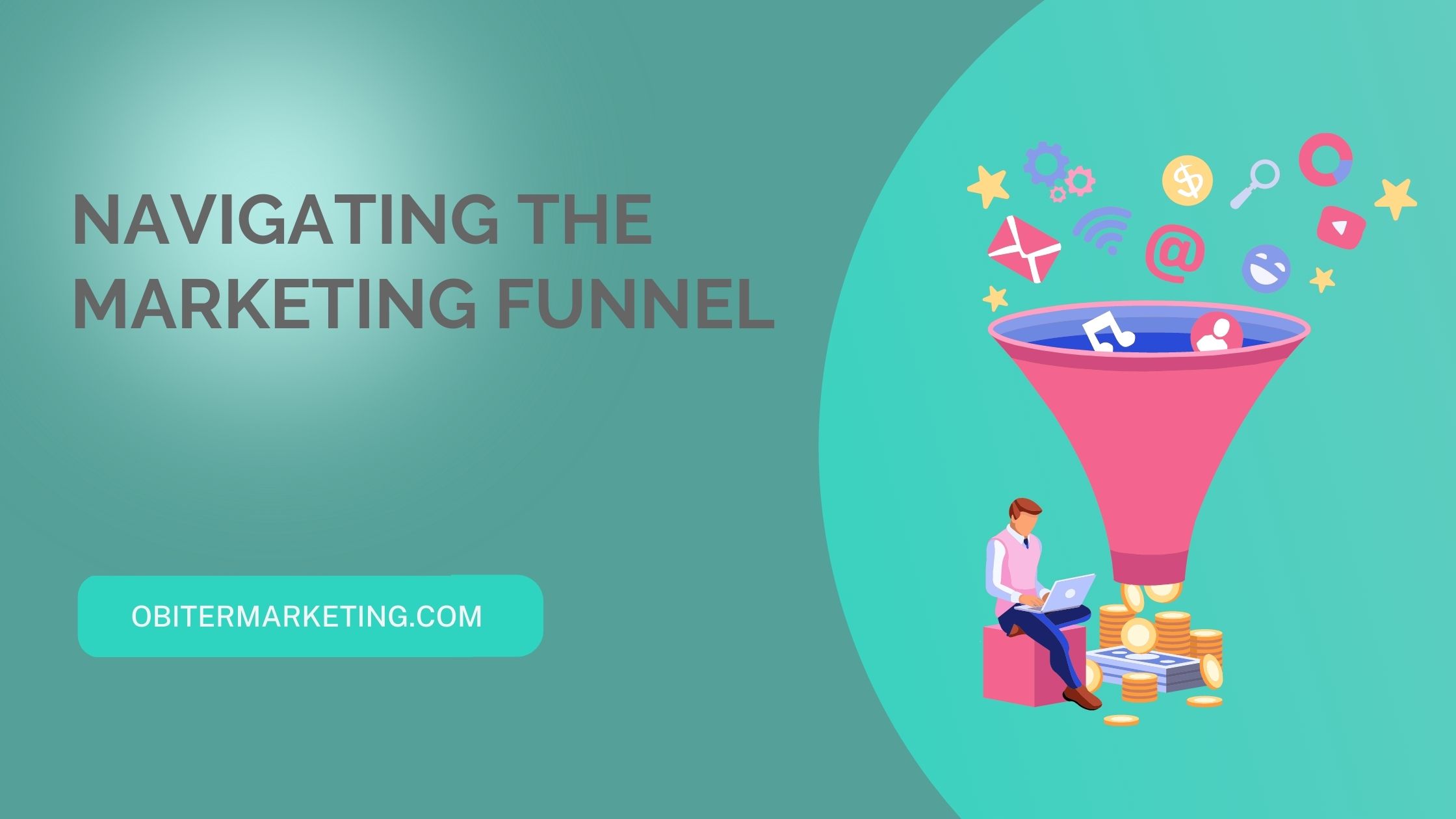
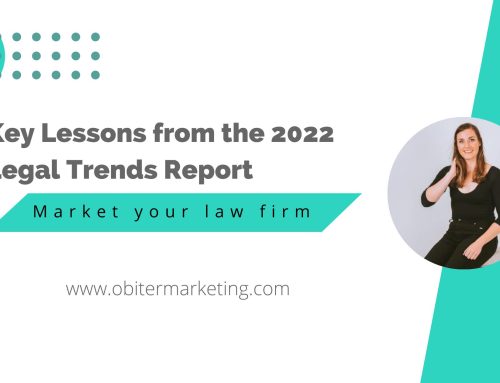
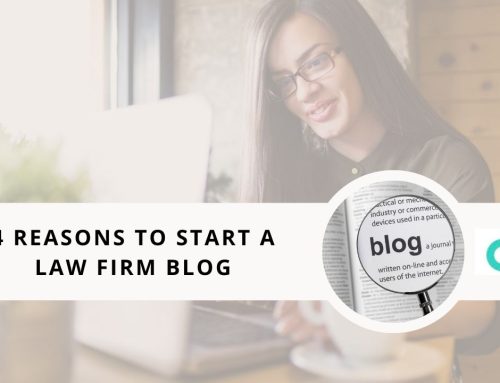

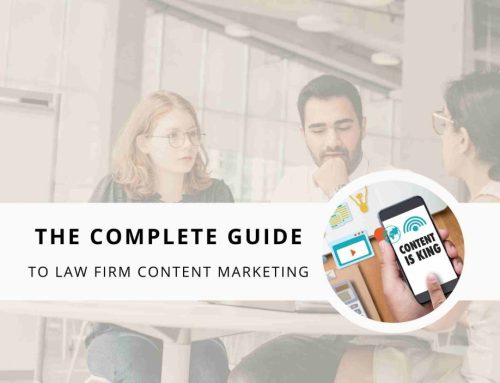
Leave A Comment
You must be logged in to post a comment.